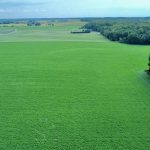Agriculture Canada predicts program spending will increase by almost 13 percent this year.
According to spending estimates tabled in the House of Commons March 3, departmental spending will increase by $341 million to $3 billion compared to a prediction of $2.65 billion in the comparable document last year.
However, the numbers, which were prepared last fall to estimate spending for the fiscal year beginning April 1, are subject to significant change during the year.
Last year’s spending prediction of $2.65 billion turned into $3.5 billion in spending after Parliament was asked three times during the year to approve unexpected expenditures.
Read Also

Forecast leans toward cooling trend
July saw below average temperatures, August came in with near to slightly above average temperatures and September built on this warming trend with well above average temperatures for the month.
The spending estimates will also be affected by the government’s deficit-fighting plans, which were announced in last week’s throne speech.
In the speech, the government said it would “freeze departmental operating budgets, that is the total amount spent on salaries, administration and overhead.”
In the department’s spending estimate to Parliament, it projected a 12.9 percent increase in operating expenditures totalling $84.6 million. Agriculture Canada financial officials said in a briefing the government’s political commitments on spending restraint will have to be reflected in later supplementary estimates presented to Parliament.
At a news conference during the budget presentation, finance minister Jim Flaherty noted that public service labour contracts call for a wage increase of 1.5 percent in the next fiscal year beginning April 1.
“Departments will have to absorb that in their budgets,” he said.
The Agriculture Canada spending estimates include $39 million for hog industry support.
It also estimates that AgriStability spending will be stable at close to $600 million.
The departmental projection calls for a 10 percent increase in spending at the Canadian Food Inspection Agency to $645 million.
There is also a plan to increase capital spending by 50 percent to $50 million.














